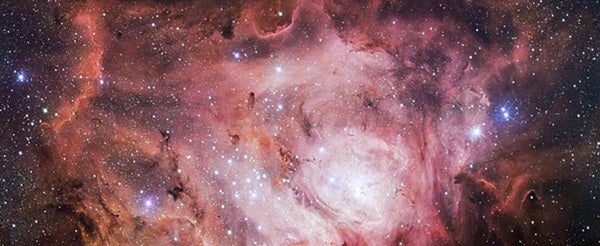The Orion Nebula gets some stiff competition for best in class from the Lagoon Nebula (M8) in Sagittarius. The Lagoon Nebula is visible to the naked eye on dark moonless nights as a bright patch along the Milky Way due north of the spout of the Sagittarius Teapot asterism.
The Lagoon Nebula was discovered by Italian astronomer Giovanni Battista Hodierna in 1654, when he described it as a nebulosa. What Hodierna likely saw, however, is not what we know today as the Lagoon Nebula, but rather an embedded open star cluster cataloged separately as NGC 6523. In fact, most records of the early observations refer to the open cluster without mentioning the nebula from which it was born.
William Herschel was the first to define the nebula as a separate object. In 1785, he described it as “an extensive milky nebulosity divided into two parts.” Irish astronomer Agnes M. Clerke coined the nickname “the Lagoon Nebula” in her 1890 book The System of the Stars.
When we set our sights on M8, our gaze is taking us some 4,100 light-years away. Under dark skies, 10×50 binoculars can distinguish the Lagoon’s overall oval shape, as well as the dark slice that cuts the nebula in half. Telescopes, meanwhile, reveal several of the swirling nebula’s more complex features.
Hidden within the nebula is another star cluster: NGC 6530. Some of its young stars sparkle among the rifts of nebulosity. If you plan to seek it out, expect to spot between two dozen and three dozen luminaries through most backyard scopes.
Many other stars lie within the Lagoon’s clouds, too. One of the brightest is 6th-magnitude 9 Sagittarii, a massive binary system comprising two extremely close type O stars whose radiation energizes much of the nebula. Another noteworthy star in the field is Herschel 36, a magnitude 9.5 supergiant just west of the brightest portion of the nebula.
Make sure to explore Astronomy’s full list of 101 cosmic objects you must see. New entries will be added each week throughout 2022.
To get the latest astronomical news and observing content delivered directly to your door, subscribe to Astronomy magazine today!










